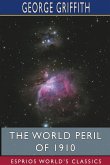Murray Leinster (June 16, 1896 - June 8, 1975) was a nom de plume of William Fitzgerald Jenkins, an American writer of science fiction. He wrote and published more than 1,500 short stories and articles, 14 movie scripts, and hundreds of radio scripts and television plays. A high school dropout, he nevertheless began a career as a freelance writer before World War I. He was two months short of his 20th birthday when his first story, "The Foreigner", appeared in the May 1916 issue of H. L. Mencken's literary magazine The Smart Set. Over the next three years, Leinster published ten more stories in the magazine. During World War I, Leinster served with the Committee of Public Information and the United States Army (1917-1918).








